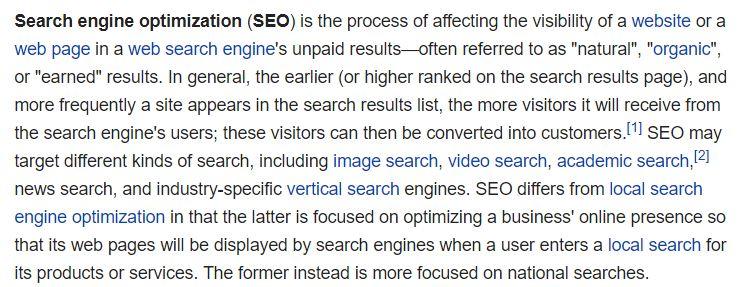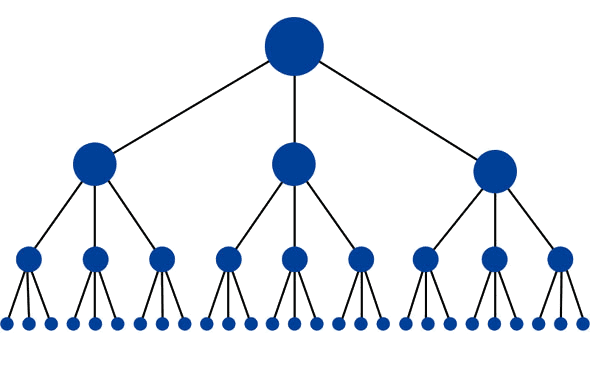Online business is in many ways different and in many ways similar to the traditional business.
In every offline business, you want your customers to visit your shop and not leave without exploring all the products that you are offering. 
Similarly, once your customer visits your website, you want to provide them with all the information they need.
And that’s where internal links can help.
Internal links are the links which go from one page to another page on the same domain.
They are used to create an information hierarchy so that your audience understands all the references you provide without bothering to Google it.
One of the best examples of internal linking is Wikipedia:

All the links in the above example redirect to Wikipedia’s different pages and provide the visitor with a complete knowledge of whatever is being talked about.
Though it is crucial to have external back links to your website but having internal links is equally important.
Here are some of the reasons why your blog should definitely have internal links:
- Google loves links
Whenever Google’s bot scrawls your website, it tries to find information that’s relevant as well as valuable.
Internal links act as an interlinked network of information that makes it easier for the search engines to extract useful information.
Check out this link pyramid that most of the well performing websites use:

Image Source: Moz.com
The big dot at the top is the home page and the smaller dots are the pages linked from the home page.
Such categorization of pages using links makes it easier for the site to rank better than the competition.
2. Important for user experience:
How amazing it is when a simple tool can prove to be beneficial not only for search engines but also for the user?
Anyone who visits your website seeks information.
By creating internal links, you make it possible for the users to access everything they are looking for and improve their experience to a large extent.
By creating internal links, you make it possible for the users to access everything. Share on XIt will engage your audience and will intrigue them to read more, eventually resulting in more traffic.
Dos and Don’ts of Internal Linking:
While the importance of internal links can’t be underestimated, it is crucial to consider some things that you should be doing and some things that you shouldn’t.
Check them out:
a. Don’t over link
A mistake that many marketers make is linking every page of the website several times in their blogs.
Overusing internal links may result in reduced search engine ranking.
Furthermore, content with a lot of links may seem cluttered and may disrupt the reading experience.
b. Focus on anchor text
Anchor text is the text which appears on a link. Here’s how it looks:
 The text “Social Media” is an anchor text and the link directs to a blog I have written on Social Media Marketing.
The text “Social Media” is an anchor text and the link directs to a blog I have written on Social Media Marketing.
Using compelling and intriguing anchor text on links is an important factor that increases the number of people who click on the links.
And once you’re ready with your internal links, the traffic on your website will continue to grow.